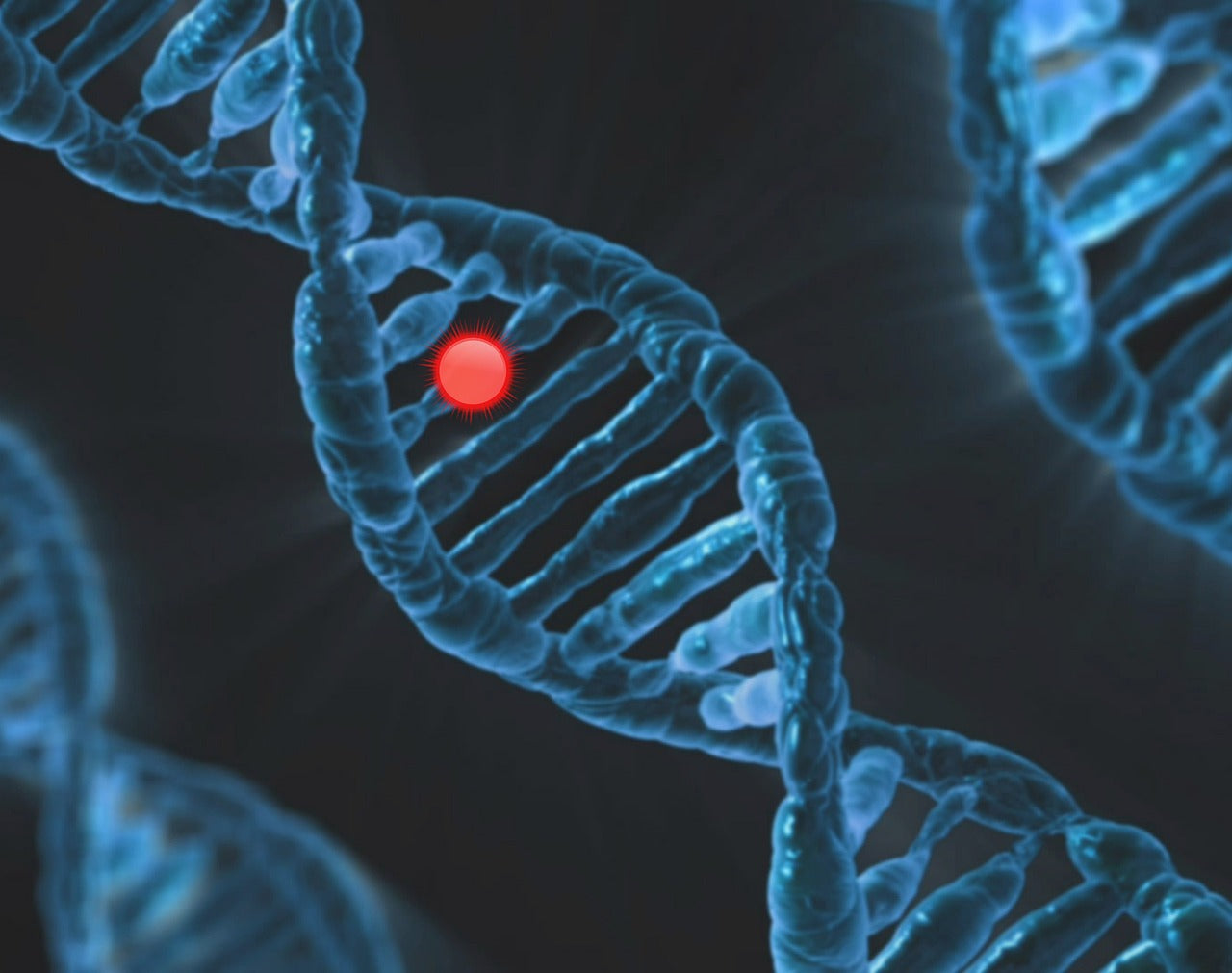
Proof Humans Are Mutating
I’m not sure how many of you are comic book fans. I’m not one, so pardon me if I butcher any of the popular comic book references.
The story of X-Men is one that centers around people who have special mutations, ones that often times let them fly, shape-shift, and even shoot lasers from their eyes.
To be quite honest, I think those mutations are awesome. It would be cool to be able to turn water into ice with my bare hands.
And, while X-Men revolves around the lives of mutants who actually experience cool benefits because of their mutations, the kinds of mutations I’m going to be discussing aren’t cool…not at all.
One of the more problematic mutations is known as the MTHFR mutation.
MTHFR is a gene whose real name is methylenetetrahydrofolate reductase. The purpose of this gene is to regulate the methylation cycle.
And in order to understand how important the MTHFR gene is, I’ll need to explain the methylation cycle.
Alright, let’s do this.
Grab a glass of lemon water and some pistachios, this is going to be good.
Untold Pain And Suffering, All Because of This…
Before I get too far into this, I want you to understand that the subject you’re about to learn about is one of the most important in all of human health.
Think of your health like a carefully stacked house of cards. If you pull a card from the top of the house, your health will suffer, but only slightly. Pull one from farther down, and your health will suffer a bit more.
When you start pulling from the bottom, well that’s when you run into serious trouble.
The methylation cycle is the bottom of the house of cards. It is the substrate, the very backbone of health. That’s why when I mentioned the need to take a handful of supplements to help produce more glutathione (here’s the article I’m referencing), I mentioned you need to know about something else too.
This process is pretty complicated, as it’s interconnected across so many channels of your health…so I’ll be breaking this up into a 2 (maybe 3) part series.
You’ll want to keep your eyes peeled for the next parts in the series.
OK.
Here’s how the methylation cycle works.
The MTHFR gene produces an enzyme which is known as MTHFR enzyme (what a coincidence).
Now this enzyme works with several classes of vitamins (vitamin B6, B12, D3, E among others). For the purposes of illustration, I’ll be focusing on how the methylation cycle works on just one class, the folate class of vitamins. These are the same vitamins recommended for pregnant mothers as they’re incredibly necessary for the formation of children in the womb.
In a perfect world, MTHFR enzymes works with folate and breaks down 5,10-methylenetetrahydrofolate to 5-methyltetrahydrofolate. When there’s a corruption in the MTHFR gene 5,10-methylenetetrahydrofolate does not get broken down.
This is a problem because your body needs 5,10-methylenetetrahydrofolate to be broken down. That’s because 5-methyltetrahydrofolate is necessary to convert an amino acid called homocysteine into yet another essential amino acid called methionine.
Too much homocysteine in your body can cause some serious problems. In fact, it’s believed to be one of the biggest contributing factors to poor heart health, as well as some other major health conditions.
However, when homocysteine is broken down into methionine, the body is then free to make use of antioxidants, can work to fashion amino acids into usable proteins, as well as working with the liver to process fats.
Ultimately, methionine works to reduce inflammation, help relieve keep mind healthy, and works to convert the hormone estradiol (E2) into estriol (E3).
Once in the liver, methionine undergoes another transformation and is turned into SAM-e (s-adenosylmethionine).
SAM-e, being an end product of methionine, is known to give the immune system a much needed boost, as well as being anti-inflammatory. It even helps to break down serotonin, dopamine, and melatonin for higher brain function.
As you can see, just one hiccup, just one faulty miscue, and important processes in the body aren’t taken care of.
Pretty crazy, huh?
Here’s What Crazier About MTHFR Mutations
What’s even crazier is there isn’t just one kind of MTFHR mutation. There are many.
After the human genome was mapped out in its entirety back in 2003, it was discovered there could be as many as 40-50 mutation possibilities for MTHFR.
But, two of the mutation types are potentially the most harmful. The mutations occur on an area of the MTFHR gene (kind of like an address) known as C677T and A1298C (or 677 and 1298).
So, how does this work? How do you develop these mutations?
As you know, your genetic makeup is determined by your parents and the genes they pass down to you. This means your mutations are based on your parents mutations, assuming they have any.
Let’s say one of your parents has a mutation on C677T and the other has a mutation on A1298C. Well, both of these mutations could be passed down to you, meaning you have a mutation on both. This is known as Compound Heterozygous.
Or, both of your parents might have a mutation on just one gene. So, for instance, A1289C is mutated in your genetic makeup because both of your parents had mutations in that same location . This is known as Homozygous.
The other ways these mutations can be expressed are Heterozygous and Triple homozygous mutations.
Heterozygous: means you have one copy of either mutation plus a normal one from the other parent.
Compound Heterozygous means you have one copy of one mutation from one parent and one copy of the other mutation and then a third one mutation on another location.
It’s a bit on the complicated side, no doubt.
The biggest takeaway here is you need to know that the MTHFR malfunction poses some serious health problems (which I’ll get into later).
By now you’re probably wondering how you can tell if you have the MTHFR malfunction or not.
You can find out if you have a MTHFR malfunction with a simple DNA test.
1. LabCorp or Quest: Most labs around the country can check you for the most common mutations.
2. 23andme This simple at-home test uses your saliva to find out your genetic profile. It’s inexpensive and predictably accurate.
3. Methylation Pathways Panel, a bit more expensive, this one gives you a good breakdown on any genetic defect in your life
4. www.promethease.com or www.mthfrsupport.com is a site that will help you get a good understanding of your genetic make-up. The data needs to be deconstructed by a trained physician.
At our office, we have a trained integrative nutrients who takes time to decode the information about your genome as it relates to the methyl cycle and gives you custom tailored advice on how to optimize your methyl cycle productivity.
Oh wait, I forgot to mention this.
Just because you have a mutation in your methyl cycle doesn’t mean you’re up the creek without a paddle.
And, on the same hand, if you do have problems with your methyl cycle and want to make sure you get on top of your health today, you’ll want to check out my next email.
Keep in mind, my goal always has been, and will continue to be, to give you the most informative, and cutting edge health and nutritional information so you can feel your best, and have health as it ought to be.
Stay tuned for the next post.
Talk soon,
Dr. Wiggy
www.HealthAsItOughtToBe.com



